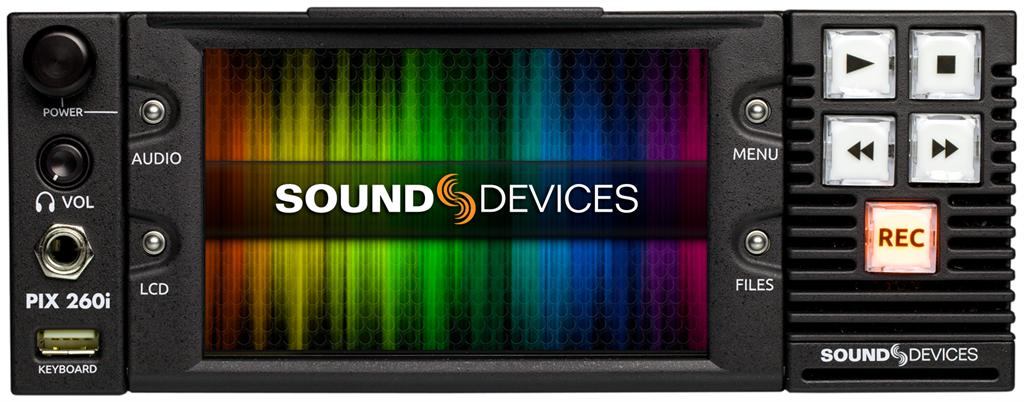Sound Devices Racks Up Interest for PIX 260i Production Video Recorders at AES 2013
Rack-Mounted PIX 260i Enables Unprecedented Audio Control for Production Professionals
NEW YORK, OCTOBER 18, 2013— Sound Devices, specialists in portable audio and video products for field production, showcases the latest functionality for the PIX 260i Production Video Recorders at the 135th International AES Convention (Gotham Sound and Communications, Booth 2738). PIX 260i seamlessly replaces tape-based video decks in production and post-production environments, while also offering 32 tracks of audio recording and playback. Its latest firmware, version 1.03, brings even more functionality to the end-user.

The PIX 260i brings the features and tools needed by production companies looking to migrate to file-based recording and playback environments. It records either QuickTime files in either Apple ProRes or Avid DNxHD video formats or WAV format audio files. Files recorded with Apple ProRes or Avid DNxHD are ready for editing directly from the recorder in common editing environments, such as Avid, Final Cut Pro and Adobe Premiere, eliminating time-consuming transferring and transcoding. For color-critical applications, the PIX 260i supports Apple ProRes 4444 through its 12-bit, 4:4:4 3G-SDI I/O. Users can also play out files from the PIX 260i for real-time applications.
Continuing the company’s heritage in production sound, Sound Devices infused the PIX 260i with 32-track audio recording and playback capabilities. In addition to 16 channels of embedded SDI audio and eight channels of HDMI audio, the PIX 260i also accepts eight channels of line-level analog I/O and eight channels of AES digital audio. Using Dante, the PIX 260i can accept and transmit up to 32 channels of audio over Ethernet.
Files are recorded either simultaneously or sequentially on up to four separate, 2.5" SSD storage devices via two front panel PIX-CADDY slots and two rear panel eSATAp connections. This redundancy in local, removable storage devices, coupled with standard, Ethernet-based file transfer features further reduces steps in the production workflow. Recording to multiple drives offers immediate file backup, eliminating time-consuming post-record copying. Gigabit Ethernet network ports enable remote access to recorded files and the ability to transfer these files quickly into a post-production environment.
Another key feature of the PIX 260i is that it can be controlled from browser-capable computers and tablets. When connected to a data network, transport controls and setup menu controls are available on PIXNET, which offers control of one or multiple PIX 260i recorders. Multiple units can be grouped for simultaneous control.
Version 1.03 firmware, which is available as a free download to existing PIX 260i users, provides support for the new Sound Devices PIX-CADDY CF accessory. The PIX-CADDY CF allows the PIX 260i to record polyphonic WAV files directly to removable CompactFlash cards (audio poly mode only). In addition, v1.03 enables users to record and playback Mono Audio Wave Files (audio only mode with SSD and HDD) and supports RS-422 locate to timecode, cue point commands and device type ID (Sony BVW-75 emulation). Version 1.03 also provides an added scene increment shortcut feature from main screen and added options for displaying smaller audio meters in various parts of the main screen.
The professional video industry's #1 source for news, trends and product and tech information. Sign up below.
Existing PIX 260i users can download version 1.03 for free by visiting http://www.sounddevices.com/download/pix260i-firmware/.
Sound Devices, LLC designs and manufactures portable audio mixers, digital audio recorders, and digital video recorders and related equipment for feature film, episodic television, documentary, news-gathering, and acoustical test and measurement applications. Founded in 1998, the company designs and manufactures from their Reedsburg, Wisconsin headquarters with additional offices in Madison, WI and Highland Park, IL. For more information, visit the Sound Devices website, www.sounddevices.com.
